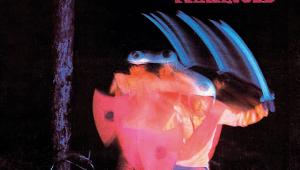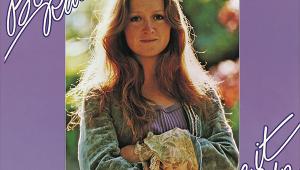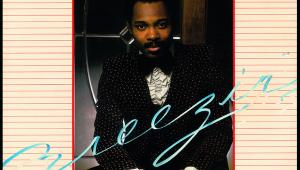Donald Fagen The Nightfly
![]()
Having established himself in the 1970s as half of the acclaimed thinking person's rock duo Steely Dan, Donald Fagen became a solo performer in 1981 when his partnership with Walter Becker fell apart.
![]()
Released on October the 1st, 1982, The Nightfly was Fagen's first solo album and, although similarities to his work in Steely Dan abounded, there were also dramatic differences. For starters, whereas much of Steely Dan's output had been in the form of cryptic, fictionalised story songs, most of the lyrics on The Nightfly were clearly autobiographical in nature.
'I used to live 50 miles outside New York City in one of those rows of prefab houses,' Fagen explained. 'It was a bland environment. One of my only escapes was late-night radio shows broadcast from Manhattan – jazz and rhythm and blues. To me, the DJs were romantic figures and the whole hipster culture of black lifestyles seemed much more vital to a kid living in the suburbs.'
Musical Guru
So when he started work on The Nightfly, Fagen set out to explore and document how those early experiences affected his – and much of his generation's – outlook on life. As the songs took shape, the work evolved into something like a concept album, held together by an imaginary deejay Fagen invented by the name of 'Lester the Nightfly'.
On the cover of the album Fagen portrays the imaginary Nightfly, a late-night radio jock, seated behind a turntable, with a cigarette in his right hand while his left is wrapped around the base of an RCA 77DX microphone. The music on the album represents how a late-1950s teenager might have viewed the era, with the Nightfly as his musical guru, shaping his life decisions with judiciously chosen songs.
Fagen has said that, as a young man, he was looking for alternatives to the '50s lifestyle, including, 'the political climate, the sexual repression, and the fact that the technological advances of the period didn't seem to have a guiding humanistic philosophy behind them. A lot of kids were looking for alternatives, and it's amazing how many of us found them in jazz, in other kinds of black music and in the sort of hip ideas and attitudes we could pick up on the late-night radio talk shows.'
![]()
He started the project in 1981 at The Village Recorder studios in Los Angeles, bringing in an impressive array of top session talent, many of whom had played previously on Steely Dan albums. Larry Carlton and Hugh McCracken, for example, were prominent among the guitarists, with Greg Phillinganes and Michael Omartian handling keyboards, Jeff Porcaro and Ed Green playing drums and The Brecker Brothers on horns. With such familiar names, it's hardly surprising that the end results frequently recalled Steely Dan – particularly on the band's later, mellower albums.
The Nightfly sits at the start of the digital recording era and, given Fagen's obsession with achieving perfect audio, it was natural for him to want to explore digital. He had started down that path on Steely Dan's 1980 release Gaucho, but The Nightfly was his first attempt at a fully digital album.
Optimistic Concept
The album opens with 'I.G.Y.', which stood for International Geophysical Year – this started on July the 1st, 1957 and ended 18 months later on December 31, 1958. The I.G.Y. was intended to usher in a new era of global scientific collaboration in the wake of the end of the Cold War, and Fagen's breezy, jazz-inflected song seems, at first listen, to celebrate the optimism of the I.G.Y. concept, declaring, 'What a beautiful world this will be/What a glorious time to be free'. But anyone familiar with Steely Dan's work inevitably wonders whether this apparently euphoric vision of the future is real or ironic.
Brighter And Lighter
According to Fagen himself, 'I actually tried to write these new songs with as little irony as possible'. He went on to say, 'I wanted this album to be a little brighter and a little lighter than a Steely Dan record. I wanted it to be more fun to listen to. And I wanted to make an album that was more personal…'.
















































